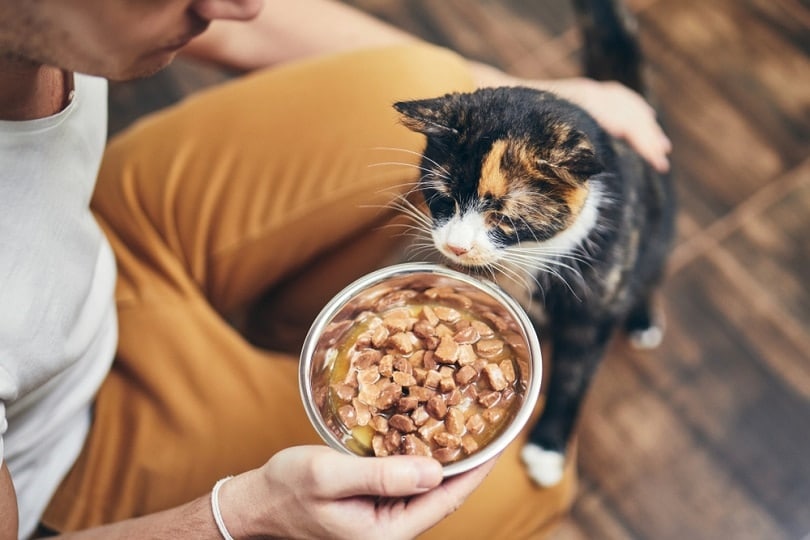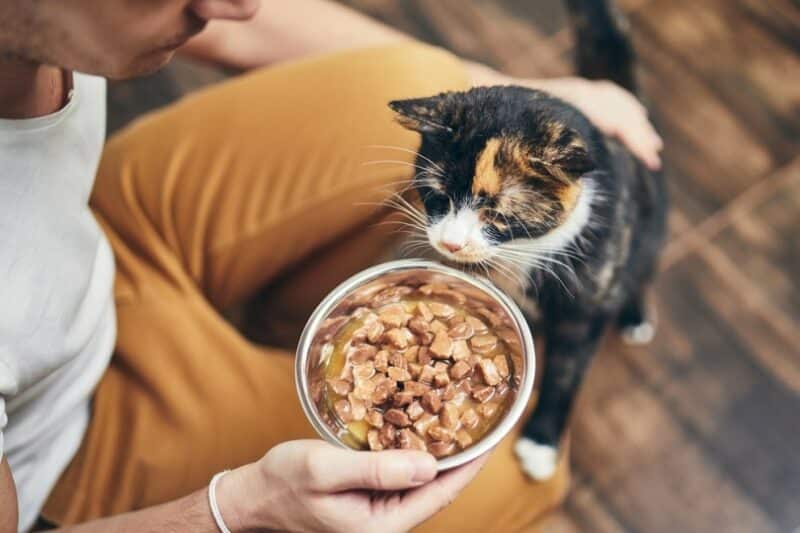As a cat owner, you want to provide your feline friend with the best nutrition to keep them healthy and happy. But just like people, your cat’s nutritional needs will change throughout its lifetime.
There are several possible reasons, such as age, health issues, or a food allergy. In this article, we’ll look at instances or signs that it may be time to change your cat’s diet.

Is Changing a Cat’s Diet Ever Okay?
Generally speaking, changing your cat’s diet isn’t a big deal as long as you’re mindful of the following key points:
- The diet you’re changing to should be complete, nutritious, and appropriate for your feline
- The dietary change should be done gradually
- Your cat should be closely monitored through the transition phase to ensure that they’re adjusting to the new diet well
In other cases, changing your cat’s diet might not be an option, but rather a necessity. We’ll discuss some of these scenarios next.

The 6 Instances When a Dietary Change is Necessary
In some instances, a dietary change might be something your veterinarian would advise for your cat. These changes might either be temporary or permanent. Examples of such instances include the following:
1. Your Kitten is Growing Up
As kittens age, their nutritional needs change. Kittens require food that’s high in energy (calories) to facilitate proper growth and development. Adult cats on the other hand require nutrition to maintain health. Senior cats often have different dietary needs than adult cats
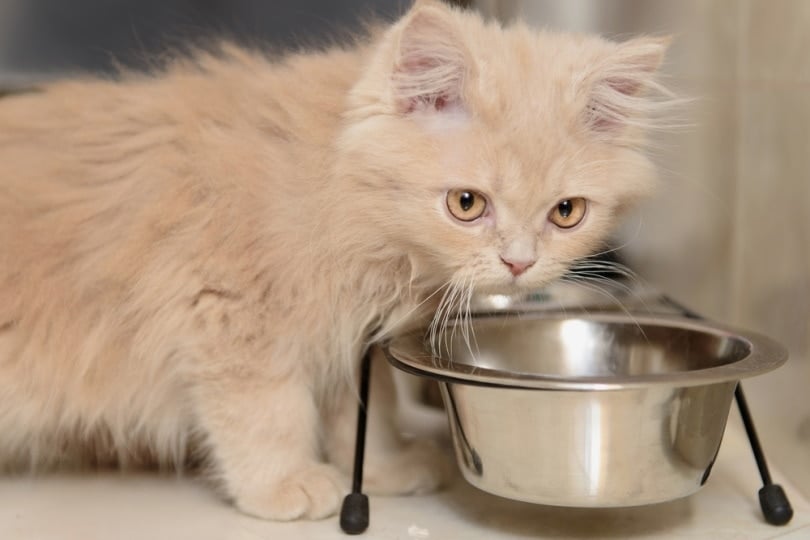
2. Your Cat is Pregnant or Lactating
If your female cat is pregnant or lactating, she will need a diet that’s different from an adult’s cat. Most vets recommend slowly transitioning pregnant or lactating queens to a kitten’s diet because of the metabolic demands of both these biological processes.
3. Your Cat Has a Food Allergy or Sensitivity
Food allergies can sometimes set in later in life, and food or an ingredient that your cat was previously used to might not longer be appropriate for them. Your vet may transition your cat to a hypoallergenic diet, or a new diet which is free of any ingredients that your cat is allergic to.
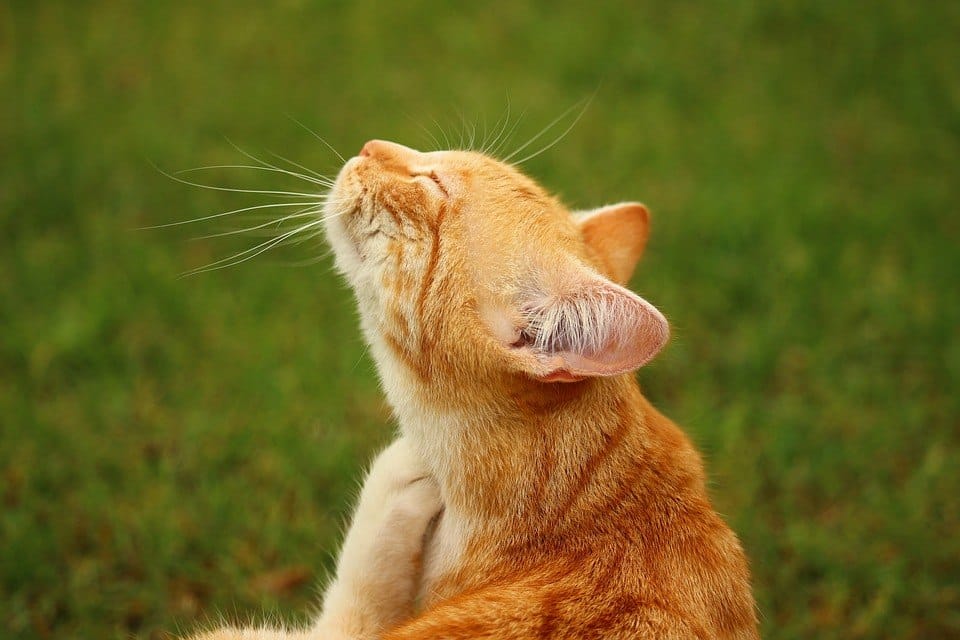
4. Your Cat Has a Medical Diagnosis
Sometimes, a diagnosis may require a long term dietary change. For example, your cat’s diet might be changed if they are diagnosed with feline diabetes. At other time, the presence of stones in your cat’s urinary system may warrant a transition to a renal diet. Such diets are often termed as prescription diets. As the name suggests, these are prescribed by your veterinarian.
5. Your Cat is Hospitalized
If your cat has an unexpected need for hospitalization, your vet may temporarily place them on a diet different than the one they’re fed at home. Such diets are called recovery diets. These diets are highly digestible and very nutrient dense. Veterinarians use these diets when they feel your cat would benefit from small yet nutritious morsels to facilitate their recovery during their stay at the hospital.
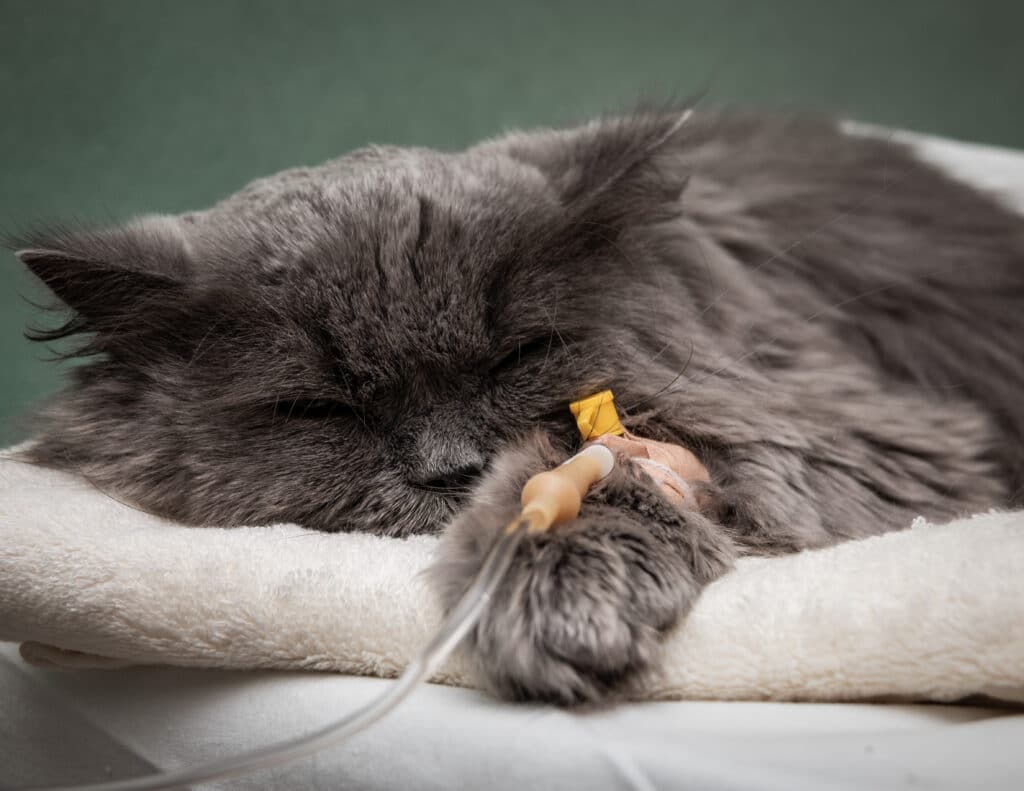
6. Your Cat Had a Medical Procedure Which Requires a Dietary Change
Sometimes, your cat might have their diet changed if they’ve recently undergone a procedure which requires a dietary adjustment. For example, if your cat had several dental extractions, your vet may recommend a fresh food diet over a kibble diet. Likewise, if your cat had an unfortunate accident and underwent orthopedic repair for their jaw, your vet might prescribe a diet in the form of a slurry, so that your cat has an easier time eating their food.

Signs to Watch Out For
At times, your cat may be showing some signs that you should keep an eye out for. These signs may indicate an underlying health issue, which warrant veterinary attention. As part of the treatment process, a dietary change might be recommended by your veterinarian.
- They’re changing life stages
- Your cat seems lethargic all the time
- Your cat refuses to eat
- Your cat’s tummy is constantly upset
- Your cat’s coat looks dull
- Your cat is suddenly gaining or losing weight
As mentioned before, cats need different types of food for each stage of their life. Kittens and pregnant or lactating cats require the most calories to support their high metabolic demands. Likewise, senior cats may need food that can support a health condition they’ve been diagnosed with, such as arthritis. Though a life stage change isn’t a sign of illness or disease and is something all cats go through, it is advised to work closely with your veterinarian to ensure that your cat’s nutrition is appropriate throughout their life.
 How to Pick Your Cat’s New Food
How to Pick Your Cat’s New Food
Ready to start shopping for your cat’s new food? Use these tips for choosing the best cat food:
1. Get recommendations from your vet
This is usually mandatory if you need to change your cat’s food due to health reasons like allergies or disease. Even if your cat doesn’t have a medical need for a dietary change, it’s still best to consult with your veterinarian before you change your cat’s diet to ensure that the new diet you select is appropriate for your feline.
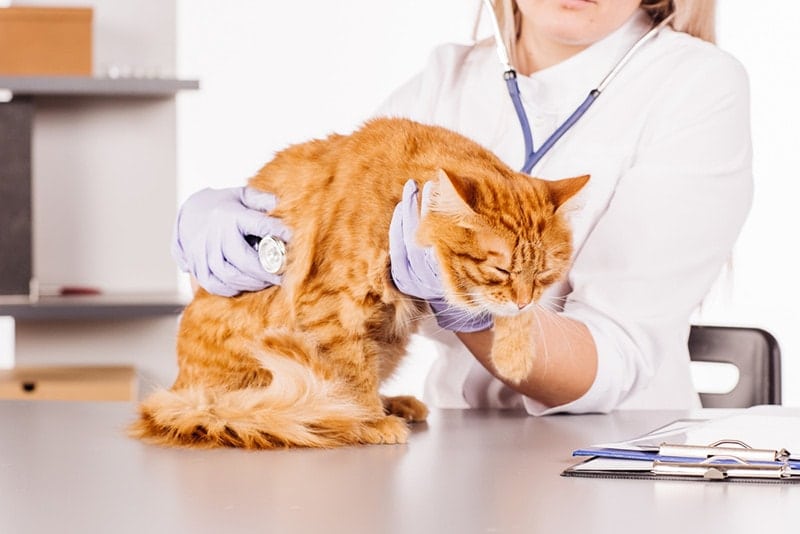
2. Choose a protein-rich cat food
Cats are obligate carnivores and can’t effectively synthesize a key nutrient: taurine. This amino acid can only be found in protein from animal sources such as beef, chicken, pork, and fish. When choosing a new cat food, go for low-carb, high-protein brands.
3. Consider what your cat likes
Does your cat prefer kibble, wet food, or a combination of the two? Factor in your cat’s preference when shopping for their new food – you want them to enjoy it as well!
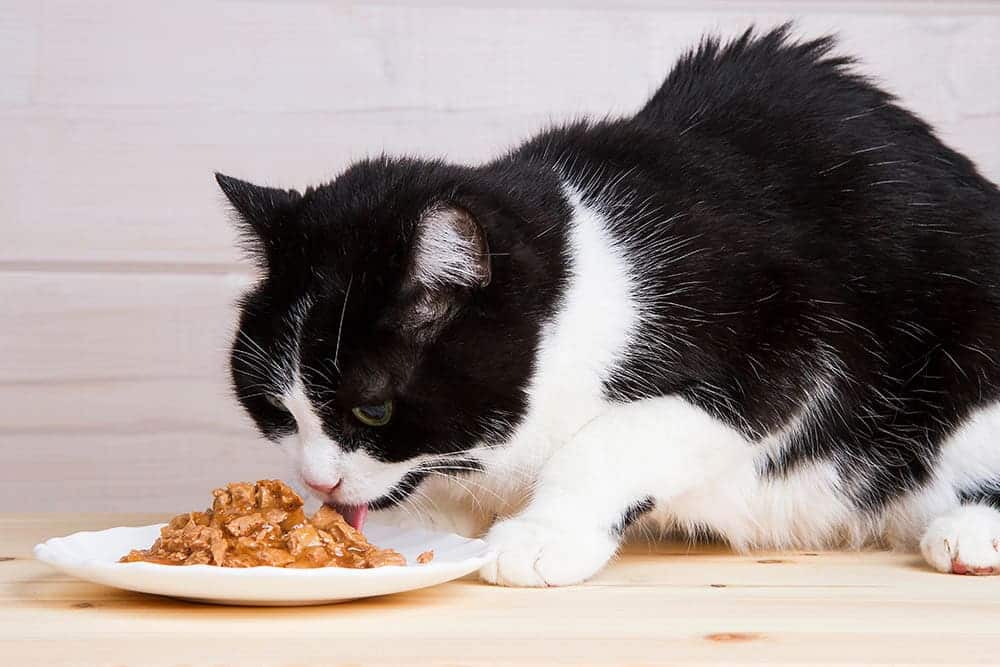
4. Look for compliance stamps or statements
A quick and easy way to identify nutritionally-balanced cat food is by checking for a nutritional adequacy statement on the packaging. The boards that govern these standards vary by country. In the US, these standards are set by AAFCO. In Europe, they are set by the FEDIAF.

How to Switch Your Cat to Their New Food
Changing your cat’s diet should be a gradual transition. Their sensitive stomachs need time to adjust to the new food, especially if it’s a completely different formulation.
Otherwise, you risk upsetting your cat’s tummy and turning them off the replacement food. Use these tips for a safe transition:
Buy small bags first: As creatures of habit, cats don’t enjoy changes to their routine and that includes their food. So don’t buy a giant 20-pound bag of the brand just yet. Get a smaller pack, just enough for the transition period. This way, you can explore more brands without wasting money.
- Begin by mixing a small portion of the new food (about 10%) with a very large portion of your cat’s usual diet (90%) for one or their daily meals.
Observe for a period of about 2 days. Pay close attention to signs of digestive distress, such as diarrhea, constipation, bloat, flatulence, or vomiting. Also, pay attention to your cat’s grooming habits; irritation caused by a dietary change might sometimes be itchy, and your cat might groom more intensely or excessively if their bodies don’t agree with a new diet. - If your cat seems fine for a day or two, you can use the same ratio for all meals your cat eats in a 24-hour period. Again, observe your cat for a period of about 1-2 days after you do so.
- If your cat seems to be tolerating their new food well, you can gradually increase the ratio of their new food and decrease the ratio of their old food as follows:
| Days 6–8: | 75% old food, 25% new food |
| Days 10-12: | 50% old food, 50% new food |
| Days 12-14: | 25% old food, 75% new food |
| Day 14 onwards: | 100% new food |
Monitor your cat’s reaction: Keep a close eye on your cat’s eating habits, behavior, and stool consistency during the transition. If your cat experiences any adverse reactions, such as vomiting, diarrhea, or total refusal to eat, stop feeding them the new food and consult your veterinarian for guidance.
If your cat seems to be showing signs of digestive distress at any point during the transition process, you should revert them back to their old diet and have them inspected by your veterinarian. “Diet hopping”, a process where transitions are stopped halfway and replaced with a brand new dietary transition, is not recommended. Though they are often well-intended, they may result in more harm than good, and your cat may end up feeling worse.

Conclusion
Cats often go through several dietary changes throughout their life. Most of these changes are fueled by the natural changes in their metabolic demands. At other times, these changes are warranted due to health reasons.In some instances, a dietary change many only be temporary. In other cases though, it may be a long term change.
Keeping an eye on your cat’s general health and their eating habits may offer clues when it comes to determining if dietary changes are needed. Your veterinarian can help confirm your suspicions for a dietary change. Transitioning cats to a new food or diet is a process that should be done with patience and a good deal of observation to ensure that your cat handles the change well and that their body agrees with it too.
Featured Image Credit: Jaromir Chalabala, Shutterstock
Contents
- Is Changing a Cat’s Diet Ever Okay?
- The 6 Instances When a Dietary Change is Necessary
- 1. Your Kitten is Growing Up
- 2. Your Cat is Pregnant or Lactating
- 3. Your Cat Has a Food Allergy or Sensitivity
- 4. Your Cat Has a Medical Diagnosis
- 5. Your Cat is Hospitalized
- 6. Your Cat Had a Medical Procedure Which Requires a Dietary Change
- Signs to Watch Out For
- How to Pick Your Cat’s New Food
- 1. Get recommendations from your vet
- 2. Choose a protein-rich cat food
- 3. Consider what your cat likes
- 4. Look for compliance stamps or statements
- How to Switch Your Cat to Their New Food
- Conclusion

